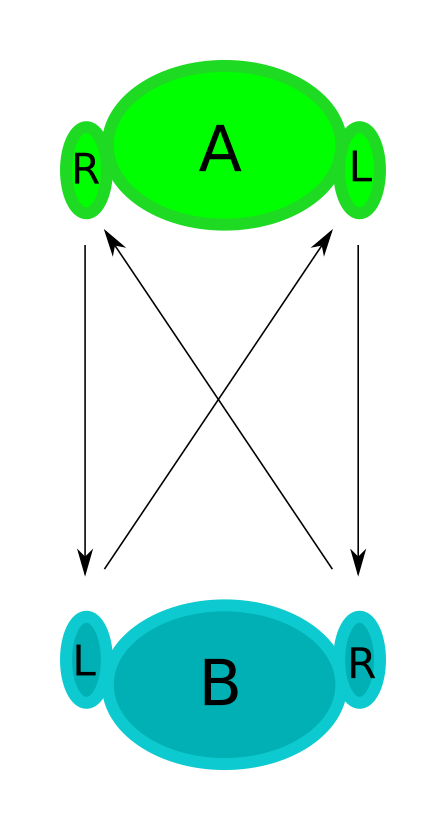2 juggler vanilla passing siteswap
This is exactly the same as vanilla siteswap described for two hands, only difference is that the beats are distributed over four hands.
Hand Order
Then hand order commonly used is: JugglerA(R), JugglerB(R), JugglerA(L), JugglerB(L).
So the pattern always alternates between JugglerA and JugglerB on each beat and each juggler has thows alternating between left, right, left, right, left… hand.
Global Pattern vs Local Pattern
The global pattern is just what we have just described. A siteswap used to describe a pattern on four hands. But two passers both want to know only their own "role" in the pattern, not what happens globally.
For that, we need to split the global pattern into throws for JugglerA and throws for JugglerB. This is easy, as the pattern always alternates between JugglerA and JugglerB - so every 2nd number belongs to one partner.
Example:
77722 is the global pattern. Let's write this as (double length). Now every other number belongs to the same juggler. We do:
7 7 7 2 2 7 7 7 2 2 A 7 7 2 7 2 B 7 2 7 7 2
So JugglerA gets the throw sequence 77272 and JugglerB gets the sequence 72772.
We can then make the sequence appear even more like a 2 hand vanilla siteswap by dividing all numbers by 2. This way we ignore the beats that happen at the other passer.
So 77272 becomes
3.5 3.5 1 3.5 1
Now all passes to the other person show a half beat away, because the other juggler's hands do their throws in between the throws of my hands.
